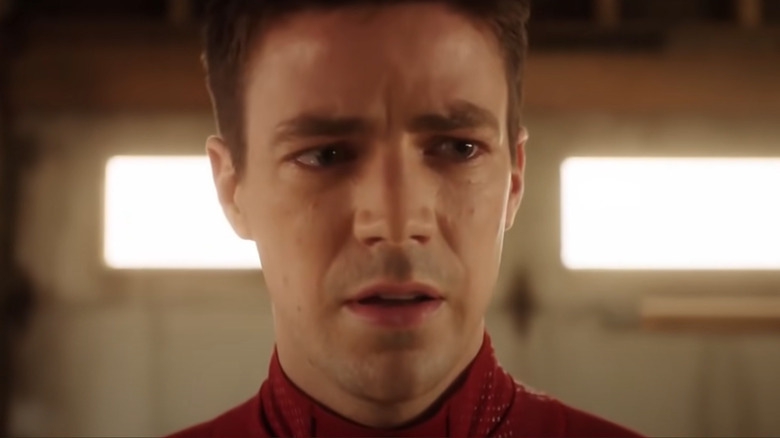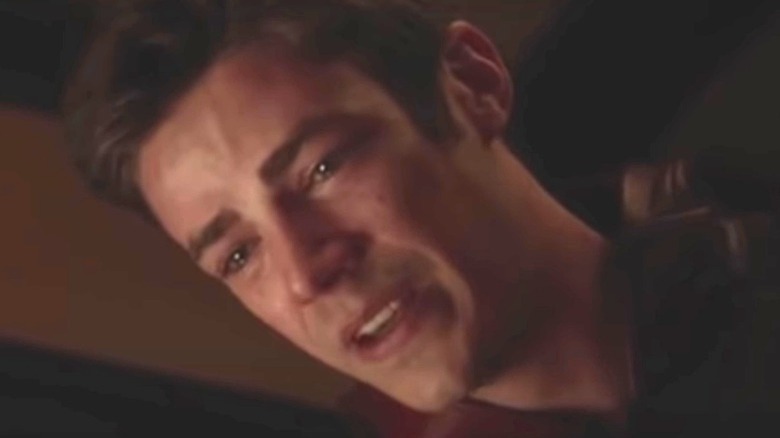Barry Allen's Most Heartbreaking Moment On The Flash
Many superhero fans are familiar with The CW's "The Flash," a TV adaptation of the titular DC Comics character who fights crime with his ability to run at the speed of light. "The Flash" is in its 8th season now, residing as the eldest show out of the DC Comics-centric "Arrowverse" franchise. While the series has built up a name for itself as one of the more lighthearted takes on the superhero mythos on TV right now, that doesn't mean that the show has been devoid of emotional stakes throughout its run. Indeed, pretty much every character that's ever been a part of the main cast has gone through some really tough times, chief among them being Barry Allen (Grant Gustin), aka The Flash himself.
For as upbeat as he often is, Barry has dealt with some serious personal tragedies involving the loss of friends and family. But while there have been plenty of moments over the years when Gustin's performance as Barry/The Flash tugged on the audience's heartstrings, there was one particular moment that came relatively early on the show that remains the most memorable time that the Scarlet Speedster got fans misty-eyed.
Barry says goodbye to his mom
Back in the Season 1 finale, titled "Fast Enough," much of the show's central mythos was still unraveling. Harrison Wells (Tom Cavanaugh) had been revealed both as the villainous Reverse-Flash — a.k.a. Eobard Thawne — and as the culprit for the murder of Barry's mother, Nora (Michelle Harrison) years prior. Upon learning of his ability to run back in time and prevent his mom's death, Barry sets out to change his own past.
The speedster wasn't prepared for what came next, though. Back in his childhood home, Barry sees the past Reverse-Flash terrorizing his mother and prepares to intervene before a future version of himself notices him and wordlessly motions for him not to change things. Choosing to believe his future self, Barry tearfully listens behind a closed door as Reverse-Flash fatally stabs his mother. Once the villain retreats, Barry goes to her side, taking his mask off and revealing himself as her son from the future. The two share one last poignant moment as Barry tells his mom before she dies that he and his dad are okay in the future.
At the time, this scene felt like the perfect way to cap off The Flash's origin story. But even all these years later, it's still difficult to watch and not get emotional. It stands as one of Grant Gustin's finest turns and remains one of the most heartbreaking moments not just for Barry Allen, but across the whole show.

